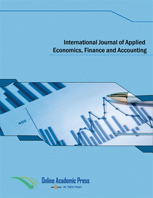An Analysis of Profitability, Capital Structure, and Credit Risk in the Peruvian Microfinance Sector
DOI:
https://doi.org/10.33094/ijaefa.v13i1.608Abstract
The Peruvian Cajas Municipales de Ahorro y Crédito (CMAC) have been integrating many people into the financial system since 1980. Their microfinance operations target both people and businesses. Hence, CMAC provides financial services to people and companies that many conventional banks might reject. Although CMAC firms have increased their operations, their profits and market share have fallen. Therefore, this study employed a PLS-SEM model to analyze the causes of this phenomenon. Following previous studies, the current analysis studied both internal and external factors. The latent variable capital structure was used to express the internal factors and indicators, while the latent variable credit risk represented the external factors. The dependent variable was profitability, and its indicators were ROA and ROE. The results of the analysis indicated that capital structure and credit risk were negatively related to profitability. Additional testing revealed that the principal causes might be attached to an increment of provisions. Moreover, CMAC managers do not accept private investors for fear of losing their power. Therefore, the recommendation is that CMAC managers improve their credit policies and share their power decisions to attract more investors.




